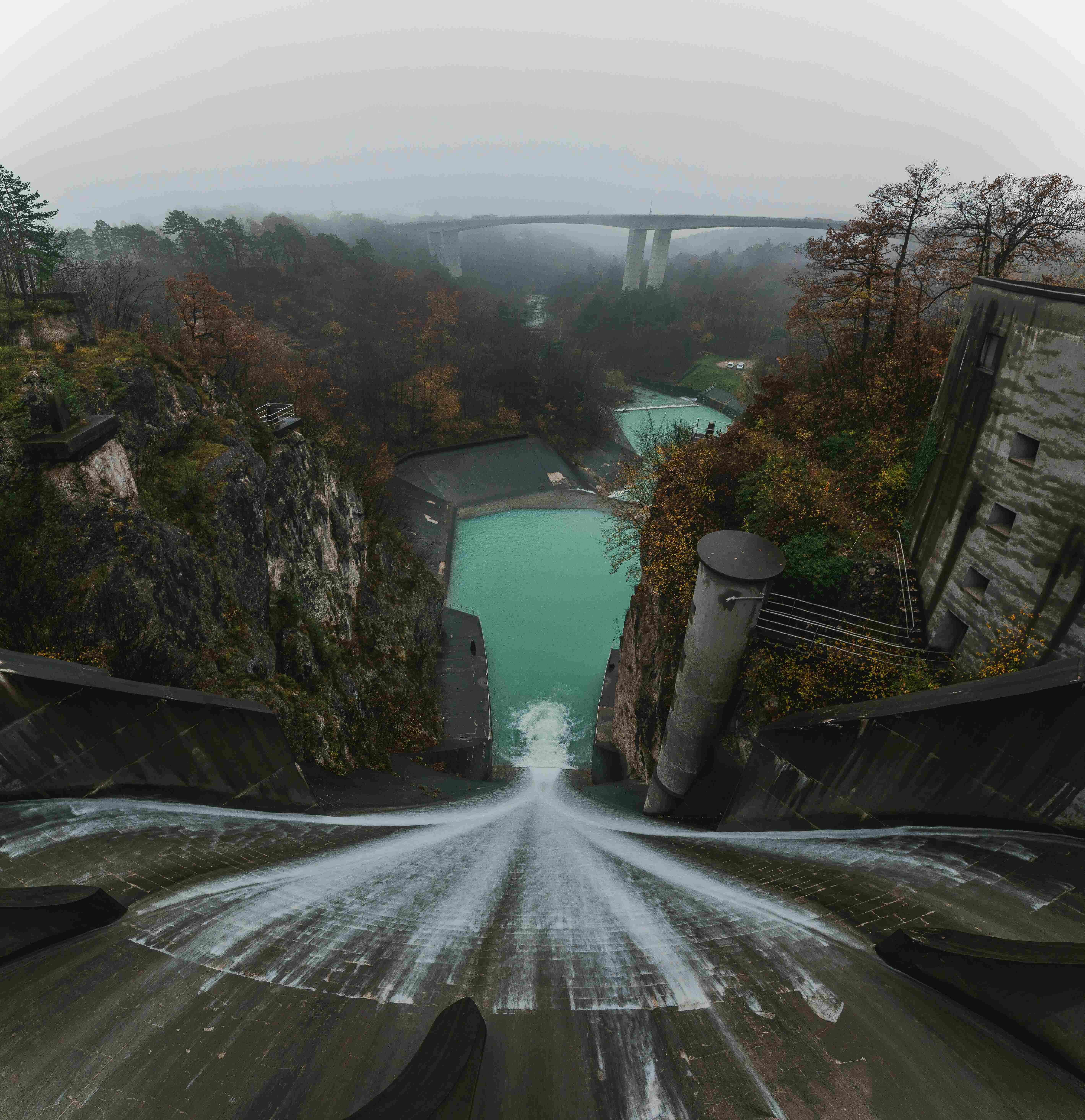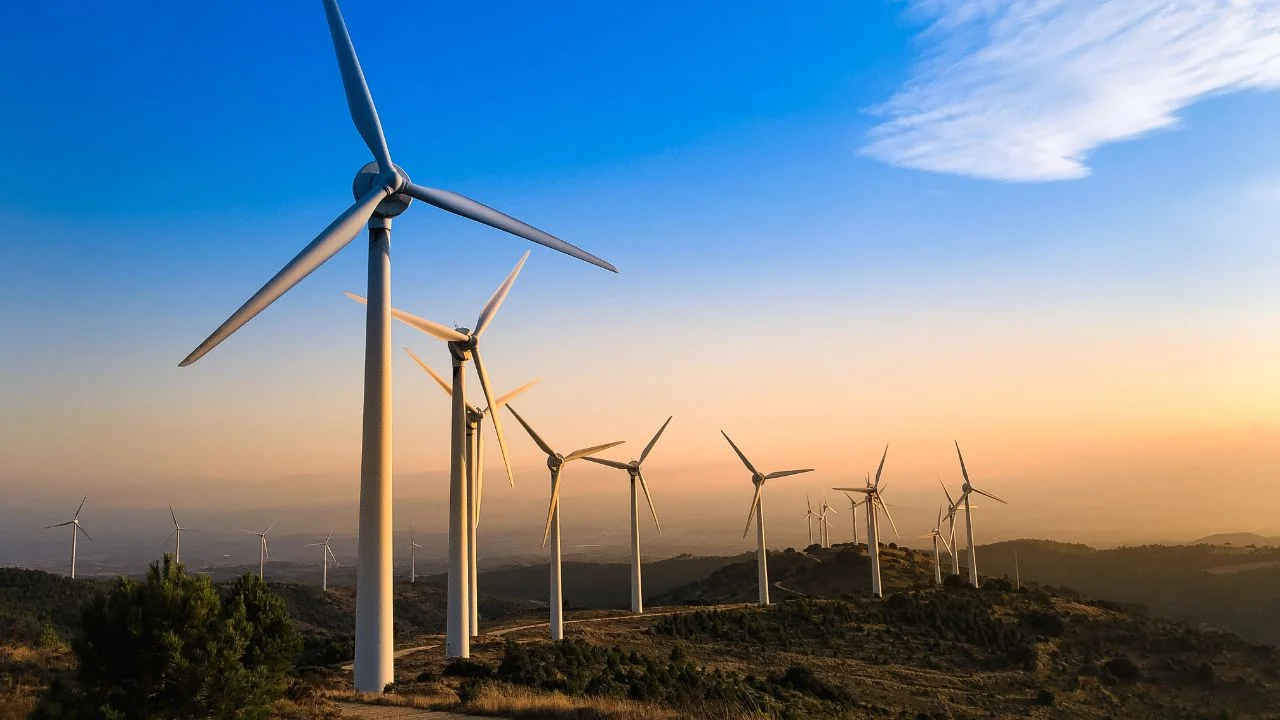Hydroelectric Energy: Our Ultimate Guide
29 May, 20248 minsHydroelectric energy is the world’s most utilised source of renewable energy. Worldwid...

Hydroelectric energy is the world’s most utilised source of renewable energy. Worldwide, it accounts for 83% of generated electricity from renewable sources. As this type of alternative power significantly impacts how the global population harnesses electricity, we wanted to release our ultimate guide on hydropower to showcase how valuable it is to the energy space.
Within this guide, we’ll cover what hydroelectric power is, including how it works, before exploring the key hydroelectric energy advantages and disadvantages.
In this guide, we’ll explore:
- What is Hydroelectric Energy?
- How Does Hydroelectric Energy Work?
- Hydroelectric Energy Advantages and Disadvantages
- Advantages of Hydroelectric Energy
- Disadvantages of Hydroelectric Energy
What is Hydroelectric Energy?
Hydroelectric energy is the most used source of renewable energy in the world. Otherwise known as hydroelectric power, hydropower or hydroelectricity, the process involves utilising kinetic energy from flowing water to generate electricity. The concept of hydroelectric energy production dates back thousands of years, when the ancient Greeks harnessed moving water to power their mills to grind wheat and flour.
As a clean, renewable energy source, hydroelectric energy is naturally fuelled by a consistent water supply. Hydroelectric power is produced by supporting structures such as dams. These structures alter the course of natural water flow in bodies of water, such as rivers, to make them usable by hydropower plants.
Several types of facilities are used to generate hydropower, all of which use similar principles of using generators and turbines to extract kinetic energy from water to produce renewable electricity. These hydropower plants connect to the electrical grid to deliver energy to the population - from households to businesses.
Globally, China is the world leader in hydroelectric energy production. According to Statista, they generated around 1,303 terawatt hours in 2022, with their Three Gorges Dam being the largest project in the country. Officially beginning production in 2003, the project spans 7,660 feet and stands at 607 feet tall. Located in the Yangtze River, its combined two generators and 32 turbines generate 22,500 MW of electricity. As a result, the dam is the largest producer of hydroelectric power on the planet.
Other mainstays in the hydropower production space include Brazil, the United States, Canada, Russia and India.
How Does Hydroelectric Energy Work?
When the water is in the reservoir, it gradually builds its potential power. This power is converted into kinetic energy as the water flows downstream. The water is directly moved through turbines which are spun by the force of the water. Once the turbines spin, they activate generators, which produce electricity. The hydroelectric energy produced is transmitted via power lines to the grid, where it can be used to deliver energy for household, business and industrial purposes.
Three types of hydroelectric energy power plants exist: impoundment, diversion and pumped storage.
- Impoundment: This type of hydroelectric power plant is the most commonly used in the industry. Impoundment facilities involve a dam that controls the water stored in a reservoir. When more power is needed, water is released from the dam to allow it to move into the turbines, where it spins them to produce electricity.
Impoundment power plants are versatile because they can adjust the amount of water released from the dam. This is done to meet specific energy demands and to support environmental factors like flood control.
- Diversion: These hydroelectric power plants differ from impoundment facilities as they don’t rely on dams. Instead, they harness several canals or penstocks to move river water to their turbines. River water flows to the turbines due to the naturally declined elevation of the river bed. The penstock has valves to regulate the flow of water required for electricity generation.
- Pumped Storage: Finally, pumped storage power plants are giant storage facilities working alongside other renewable energy sources. Operating like a large-scale battery, these facilities store electricity generated by alternative energy sources like wind, solar and nuclear.
These types of hydroelectric energy power plants pump water from a low-elevated pool uphill to a higher-elevated reservoir. When there is a demand for electricity, the water from the reservoir is released down towards turbines that spin to produce the required electricity.
Hydroelectric Energy Advantages and Disadvantages
Since we’ve covered what hydroelectric power is and how it works, it’s essential that we also cover its advantages and disadvantages. As advocates for hydroelectric recruitment, we’ve included the following sections to provide a comprehensive overview of the pros and cons of this type of energy production.
We’ll highlight the advantages associated with hydroelectricity, including its value as a renewable energy source. Additionally, we’ll cover the disadvantages, including the initial high costs involved in developing it.
3 Advantages of Hydroelectric Energy
In this section, we’ll explore hydroelectric power's key advantages. We’ll cover its importance as a renewable energy source, its reliability, and its safety in production without emitting harmful emissions.
1. Hydroelectric power is a source of renewable energy
Hydroelectric power provides opportunities in the renewable energy industry to counter the use of depleting traditional energy sources such as fossil fuels. Unlike fossil fuels, which use finite resources, the production of hydropower is harnessed by the natural replenishing flow of water from reservoirs, rivers, and waterfalls. Hydroelectric energy plants don’t waste water in production and reuse it to make it a viable renewable energy source.
The self-sufficiency accompanying the production of hydroelectricity enables global nations to meet their energy requirements sustainably. Hydroelectric energy is a long-term sustainable solution for generating renewable electricity by utilising the never-ending water cycle.
2. Hydroelectric energy is a reliable power source
Another key advantage of hydroelectric energy is that it’s a reliable power source. Hydroelectricity production relies on water, an abundant, natural, and renewable fuel, as its primary resource. Hydropower facilities can control water flow, adjusting their operations to meet specific energy demands and counter fluctuations with minimal downtime.
Hydroelectric energy is also considered highly reliable due to the longevity of its power plants. Facilities within the industry are designed to operate beyond their forecasted life. With continuous upgrades and optimisation, the average lifespan of a hydropower plant is 100 years.
Hydroelectricity's reliability is also shown in its efficiency levels, with some plants reaching energy conversion rates of 90%. Stats like this emphasise hydropower's reliability and why it's such a predominant force in the renewable energy market. It’s also another reason why many countries harness the power of hydroelectricity as part of their climate change and net-zero targets.

3. Hydroelectric power is safe and produces low emissions
Our final entry to our advantages of hydroelectric energy is that it’s a safe renewable energy source that produces low emissions. Regarding the release of pollutants, hydropower plants operate more eco-friendly than traditional power sources that utilise fossil fuels. Year-round, hydro facilities are capable of generating clean electricity without the excess of producing harmful emissions into the atmosphere.
Hydroelectric energy power plants are also safe work environments. Unlike other methods of energy production, they pose no risk factors such as gas leaks or oil spills. With water as the primary resource, safety hazards are essentially non-existent, giving peace of mind to the surrounding population and talent in hydroelectric jobs.
3 Disadvantages of Hydroelectric Energy
We also wanted to include a section on the disadvantages of this energy source to provide complete transparency on hydroelectric power. Here, we’ll provide an overview of the limited locations associated with hydropower, how it can damage aquatic life and the costs involved with power plants.
While these are cons, it’s important to realise that organisations in the hydroelectricity space do their best to avoid these disadvantages where possible.
1. There are limited locations
One significant drawback of hydroelectric power is the limited locations suitable for installing power plants. Sourcing the perfect place to build a hydropower facility encompasses a range of considerations, with the primary being a reliable and substantial water supply. Not every body of water has these traits, so finding the ideal spot for hydro plants and dams to generate the expected energy can be challenging.
For example, if a dam is placed a considerable distance from high-populated areas, it can create logistical challenges regarding transferring power to the in-demand areas. Of course, industry specialists have expertise in the prime areas where hydroelectric energy plants can thrive.
2. It can be damaging to aquatic ecosystems
Another disadvantage of hydroelectric power plants is their potential impact on aquatic ecosystems. Environmental damage can occur during the construction phase of a dam or hydropower facility. Along with the installation of the dam, power lines and roads can be included in the project build. Collectively, this can alter natural habitats and displace wildlife in the area.
Hydropower renewable energy companies will factor in the environmental costs when choosing the location to construct their power plant. They will consider how their project will affect water quality degradation, water flow, and natural habitats and whether the hydroelectricity they can generate is worth the investment in the long term.
3. Costs can be high
One of the most significant disadvantages of hydroelectric energy is the costs of the initial construction and implementation of the project. Investment in hydroelectric power plants can cost billions. For example, the Three Gorges Dam in China resulted in costs of $37 billion. Getting a project off the ground can be challenging unless the concept of a new power plant can be backed by significant capital.
While the upfront costs require significant financial investment in renewables, specialists in the field will consider opportunities for ROI before greenlighting a project. Hydroelectric energy plants typically come with low maintenance costs, and the project's expenses can be offset by generating hydropower.

Final Thoughts on Hydroelectric Energy
Hydroelectric power is a major player in the renewable energy industry. As the generator of the highest levels of renewable electricity, this source of power has and will continue to pave the way to a sustainable future.
Arguably, the advantages of hydroelectric energy, including its reliability, sustainability, and safety as a renewable energy source, outweigh the disadvantages. As the world continues to find ways to combat climate change and achieve net zero targets, they will continue to turn to the benefits of hydropower as an indispensable resource.
Looking to Grow in the Hydroelectric Energy Industry?
If you’re looking to grow in the hydroelectric energy space, NES Fircroft can help. Whether you’re a business seeking the best talent to expand your presence in the industry or want to advance your career with the latest hydropower jobs, our global staffing specialists with specific experience in renewable energy recruitment can support you.
Contact us to discuss your renewable energy recruitment needs in the hydroelectric energy industry.










